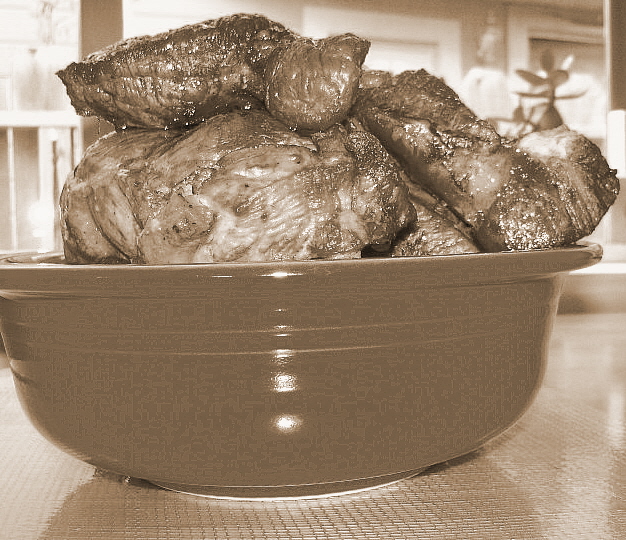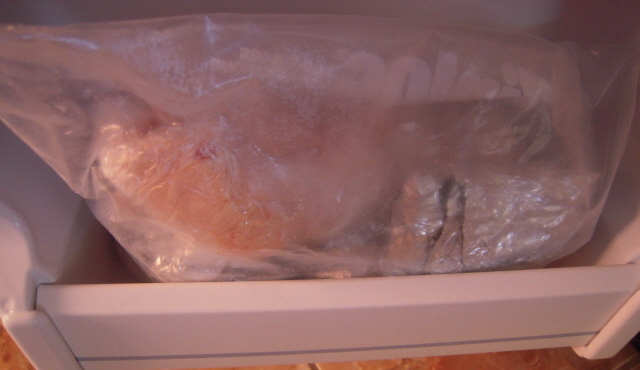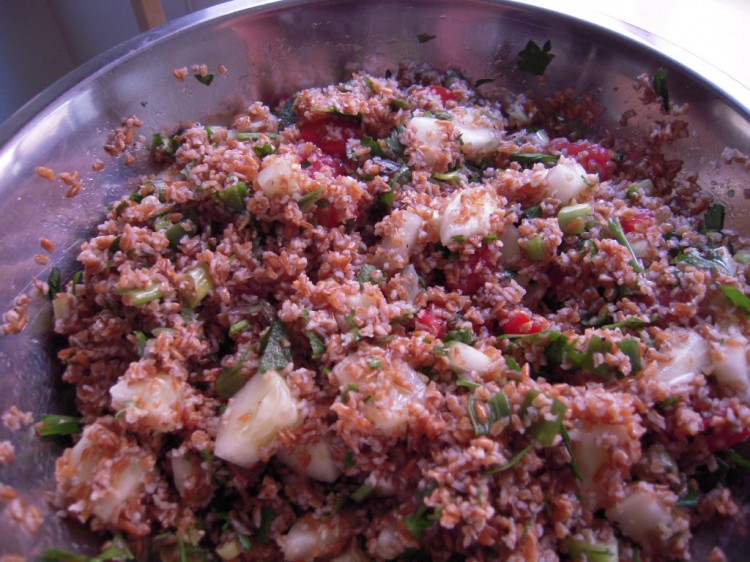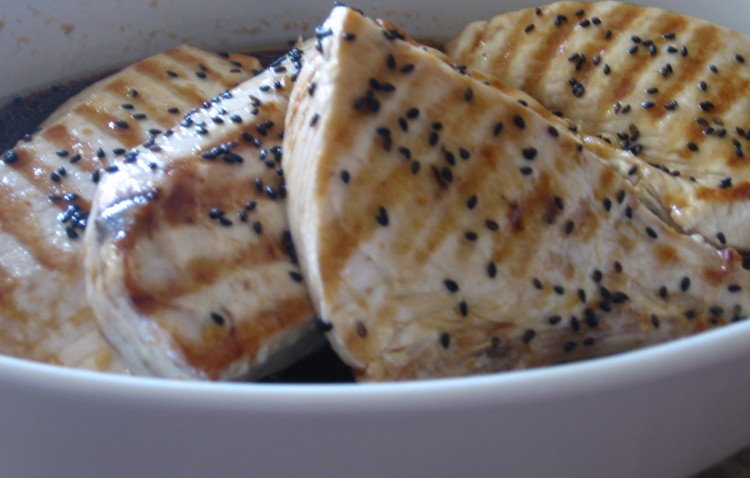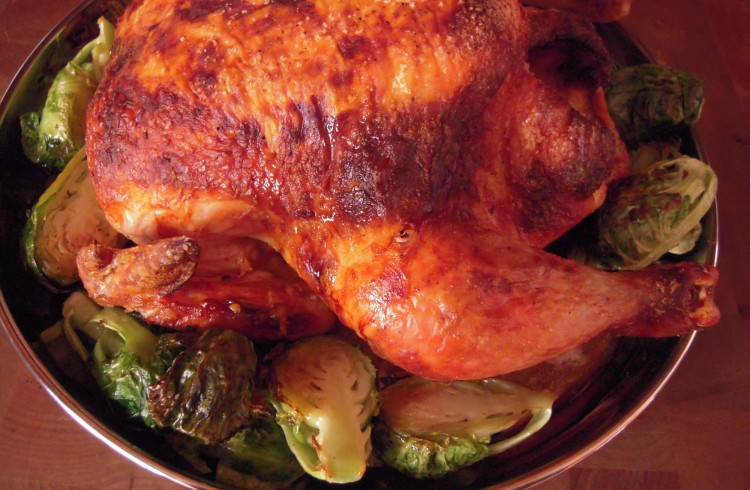
Yogurt-marinated chicken with brussels sprouts
Roast chicken is something that falls under my list of foods to have the night before execution or Armageddon. There is nothing that offers as much comfort as a big, juicy, flavorful chicken with roasted sides, such as the brussels sprouts I show in my example. Cooks know that making foods that seem simple – like a good roast chicken or braised short ribs – prove one’s culinary mettle.
With chicken the main issues are avoiding breast meat dryness and imparting flavor. Now, I have prepared many, many chickens in my lifetime, and I find that one of the best ways to hit all the right marks is to use a good yogurt marinade – spreading it under the skin as well as all around the outside. The yogurt is mixed with an acid, such as lemon or lime juice, salt and some spices. You are also free to wipe the marinade off the outside of the chicken before roasting, but if you leave it on you’ll get a nice char, particularly under convection conditions, which is desirable if you are using, say, a tandoori spice mix. (Although it is traditional to remove the skin when making chicken tandoori, what you want here is a flavorful whole roast chicken with skin.)
It is important to note that I salt the chicken before the marinading process in addition to adding it to the marinade. The salt in the yogurt ensures moisture in the final product.
I prepare this dish using a bit of Thai or Indian curry paste, or a spice mix, such as shawarma – whatever I have on hand or can mix in a pinch.
The last thing to mention is to not overcook the bird. Use a probe or meat thermometer and remove the chicken from the oven when it reaches the USDA-required internal temperature for chicken (at the innermost thigh and wing and thickest part of the breast), which is, at the time of this posting, 165 deg. F. If you are using an old meat thermometer, be advised that it probably shows a higher temp than currently required for most things, so always check with the USDA.)
If you would like to make the chicken in the photo, here you go:
Roasted chicken with tandoori spices
1 large, whole, roasting or frying chicken, neck and gizzards removed and dried with paper towels
1/2 c. good, thick, full-fat yogurt
1/8 c. lemon juice
1 teaspoon Kosher salt
2 T. tandoori spice mix (can buy in the spice section of most upscale supermarkets or in Asian/Indian markets
Extra Kosher salt to salt chicken before it goes into marinade – just a little
1) Whisk yogurt, lemon juice, salt and spice mix.
2) Salt the inside and outside of the chicken with a little Kosher salt
3) Loosen skin on chicken, starting from breast end, gently working your fingers down and finally over legs WITHOUT TEARING.
4) Rub 1/4 of marinade under the skin, making sure to reach all areas.
5) Rub 1/4 of marinade inside chicken cavities.
6) Rub remaining marinade over exterior of chicken, getting into all the nooks near the wings and legs.
7) Place in a bowl, cover with plastic wrap and marinate at least 4 hours.
8) Place on rack in roasting pan (A rack keeps the bottom of the chicken from boiling in juices, though this is not always a bad thing!)
9) Roast at 350 deg. F. convection (or 375 deg. F. if you do not have a convection oven) until done. My 3-pound chicken took about 75 minutes, but you need to go by internal temperature.
If you want to roast a pound of brussels sprouts, do this:
1) Trim, cut sprouts in half the long way, and wash (one tip, here, which is especially good when dealing with organic produce: submerge them in water for a few moments, in case there are any little bugs nestled into those tightly-woven leaves).
2) Place in microwave-safe bowl with a little water, cover with plastic wrap, make one slit in the plastic, and microwave on high for 2 minutes.
3) Set in high colander to drain until you are ready to roast.
4) Dry well with a kitchen towel or paper.
5) Toss onto a sheet pan with some Kosher salt.
6) Pour 1/4 c. of olive oil onto the pan.
7) Rub sprouts with oil by hand, leaving them cut side down on the pan.
8) Roast in the same oven as the chicken for the last 30 or so minutes, or by themselves at 375 deg. F. for 20 – 30 minutes – with convection, if you have it.
You certainly could roast them without the microwave pre-steaming, but they will be less green and less moist.
